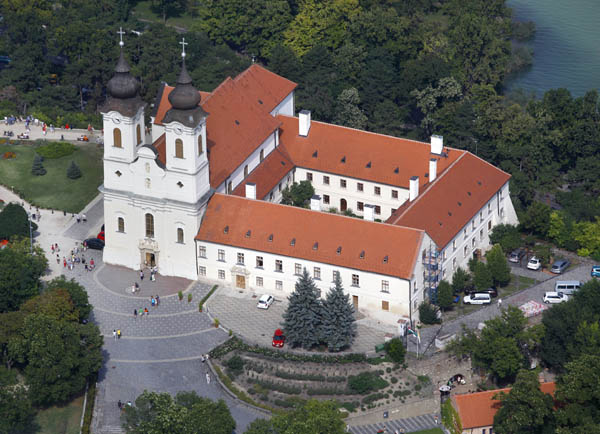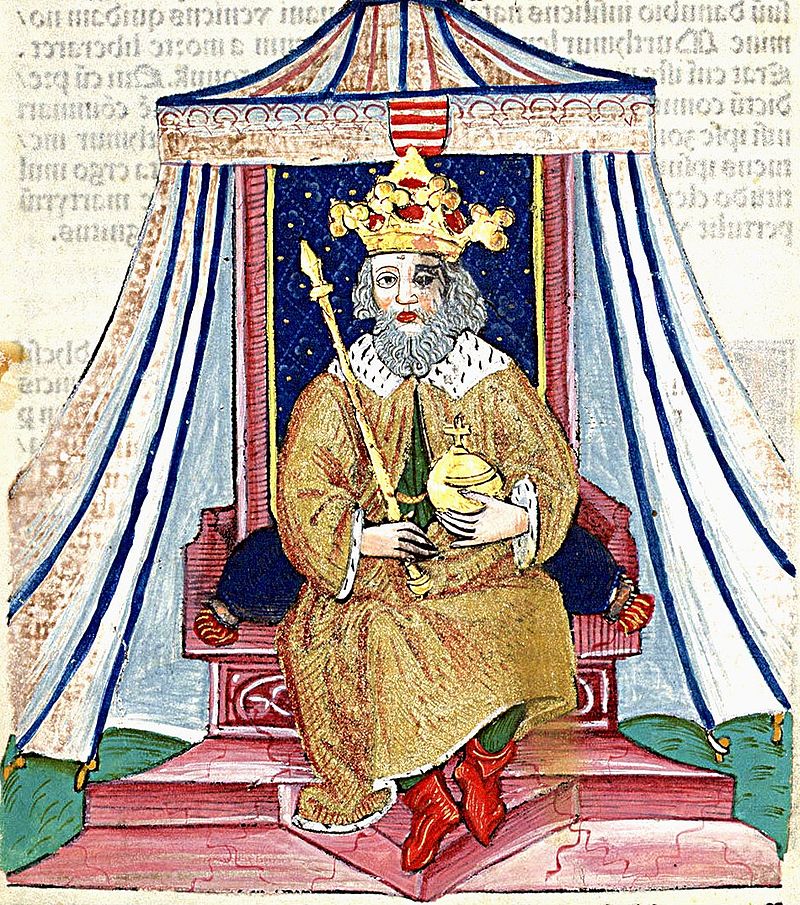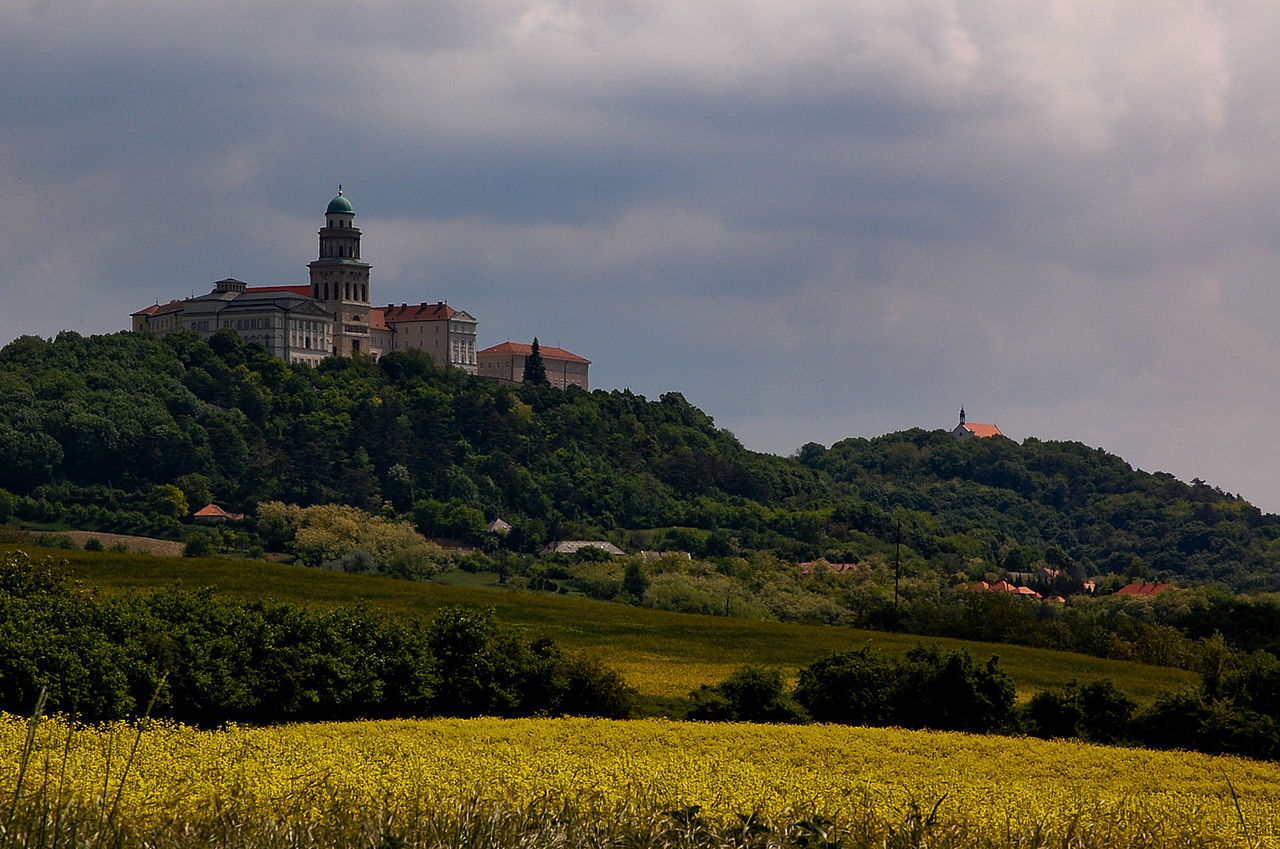
Although King Andrew I had designated the monastery himself as the burial place in the foundation charter of Tihany Abbey, this fact has only now been confirmed with the help of modern technology.Continue reading
The Charter of Tihany, founded by King Andrew I in 1055, written on sheepskin, is considered the first written record of Hungarian language. Visitors can finally view the letter in the church of Tihany until the end of August, which is otherwise kept in the archives of the Abbey of Pannonhalma – reports Kultúra.hu.
King Andrew I founded the monastery of Tihany (a village on the northern shore of Lake Balaton on the Tihany Peninsula) in honor of the Virgin Mary and Aignan of Orleans, for the spiritual well-being of himself and his family: he settled Benedictine monks for whom he built a church on the highest point of the peninsula.

The Tihany Abbey. Photo by Civertan Grafikai Stúdió via Wikipedia.org
The charter mentions the foundation, the transfer of the property, and a list of the abbey’s possessions. The census was carried out by the frontier officials, but as they had no knowledge of the place or name, the local population helped to establish the boundaries, raise the boundary mounds, and place the boundary markers. The names of the estates were therefore written in Hungarian, the language of the people.
The charter contains a total of 58 Hungarian words – not only proper names, but also common names and word structures, as well as nine verbs and formulas – and in one place a long conjunction is formed from them: feheruuaru rea meneh hodu utu rea (Fehérvárra menő hadi útra, or “onto the military road leading to Fehérvár”).
This line is interesting from the point of view of the development of the suffixes, since the adverb of today is still replaced by a pronoun. It is also interesting to note that the end of the noun phrases is always terminated by the letter u. The document also contains the king’s initials (ANDREAS), the final line of which is said to have been written by the king himself. The charter was placed on the altar at the consecration of the church of Tihany in November 1055.

King Andrew I. via Wikipedia.org
The founding letter of the Abbey of Tihany is one of the most important relics of the Hungarian past, with Hungarian words embedded in Latin text. It is considered to be the earliest surviving document. It was written on the so-called “southern membrane,” commonly used in the period, and preserved rolled up. The text of Bishop Nicholas is inscribed on two stitched parchments (sheepskin) and the document bears the king’s seal, probably with gold chains hanging from it.
The charter bears witness to the certificate format that was established by the 11th century.
Not only are the introduction, the discussion, and the conclusion separated, but also the parts that seem to be repeated from one charter to the next, appearing to be empty formalities.
On the back of the document, the reader is informed about church life. On the front page it is mentioned that the king handed over the goods and equipment needed for the service, but there is no detail of what exactly is mentioned. At the top of the back of the charter there are six lines of text (the first four and a half lines) describing what these supplies were. Vestments, stoles, handkerchiefs, linen altar cloth, two silver candlesticks, and a nocturnal (night prayer book) were among the objects listed. This list shows that Andrew I applied the customary order of the Benedictine monastery of Cluny in France to Tihany: he founded the monastery with 12 monks, six of whom were priests, following the number of apostles. None of the rich artefacts survived, due to the repeated destruction of the abbey, but the display cases in the exhibition show liturgical objects that testify to the high artistic level of the material culture of the period.
Today, the charter is kept in the archives of the Benedictine monastery of Pannonhalma Archabbey in Hungary.
The Abbey of Tihany’s documents, including the founding charter, were presumably transferred to Pannonhalma in the early 18th century.

View of Pannonhalma, with the Benedictine Abbey on the hill. Photo: Wikipedia
There is also a forged version of the original charter, which bears the seal of King Andrew’s younger brother, Prince Béla. It lists the goods given to the Abbey of Tihany. It was forged sometime before the first decades of the 15th century.
The exhibition of the Tihany foundation charter is on display at Tihany Abbey until August 31.
Featured image: Wikipedia